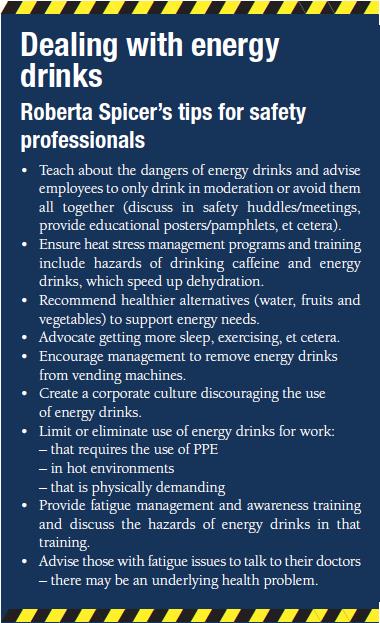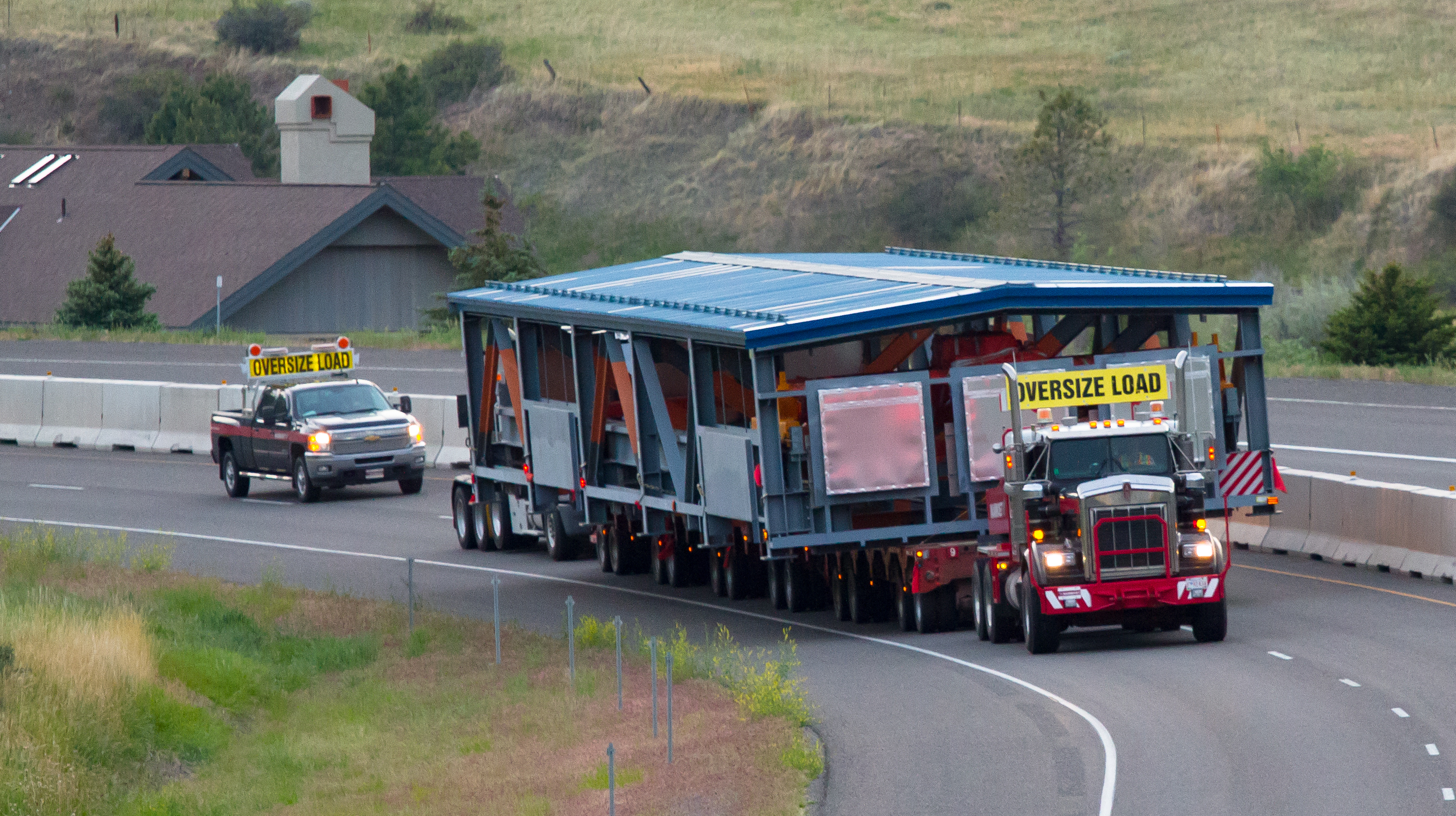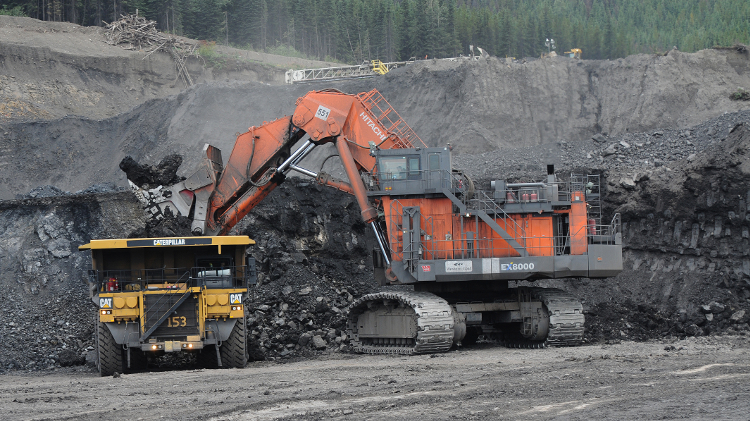Three years ago, a haul truck operator at a gold mine in Nevada collapsed on the catwalk at the end of a 12-hour shift. The man worked for Gold Canyon Mining and Construction, a company that did contract work in various mines around Nevada. Witnesses said he appeared to have a seizure. He had shown up that day, just like every other, with a lunch that consisted of about four energy drinks and nothing else, according to John Moss, safety and compliance officer for the company at the time. Following the incident, energy drinks were outlawed.
Without a medical diagnosis, it is impossible to say for sure that the energy drinks the worker consumed caused his collapse. But his is not a unique incident; energy drinks are increasingly common on the worksite and many stories circulate in the industry about miners experiencing adverse health effects from overconsumption. The health and safety sector has taken note of these aggressively marketed caffeine, sugar, and additive-laden beverages.
Roberta Spicer, superintendent of health and safety at J.S. Redpath Limited, is collecting data on the drinks’ adverse effects to produce educational material for her company. As part of her project, she started several discussions on banning energy drinks in mining on different LinkedIn message boards. Spicer says she was impressed with the response from mining professionals, and those from other industries, but the stories were sometimes horrific. “That was a huge part of the discussion, people reporting, ‘Oh this guy had a seizure, this guy had to be taken to the hospital, this guy’s heart exploded, this guy has permanent heart damage,’” she says. “The amount of stories was unbelievable.”
Cause for alarm
It is difficult to determine how big an issue energy drinks is in mining because there are a lot of anecdotes but no hard facts on accidents related to their consumption on mine sites. Adverse health effects are, however, well documented in society at large.
One reason for the rise in concern is increased consumption. In 2005, U.S. residents consumed an estimated 2.3 billion energy drinks, according to an article in the Journal of the American Medical Association. By 2010, that number was six billion and has continued to climb.
Anecdotally, at Redpath, Spicer says safety professionals have also noticed an increase in consumption by workers and are concerned. Jim Mathiasen, general safety supervisor at Vale Canada’s Ontario nickel operations, has been vocal about the detrimental effects of energy drinks and has also seen a rise in consumption among workers at the sites he oversees. “I’m seeing these cans and these little bottles everywhere,” he notes.
The increase in consumption appears to be correlated to the number of energy drink-related hospital visits. The Drug Abuse Warning Network report for 2011 disclosed that visits to emergency departments in the United States involving energy drinks doubled from 2007 to 2011, totalling more than 20,000 in that year. Of that number, 58 per cent were connected only to energy drinks, meaning no other drugs acted as contributing factors.
Known side effects of energy drinks range depending on their ingredients but include nausea, increased heart rate, altered heart rhythm, chest pains, dehydration, vomiting, insomnia, and seizures, according to the American Association of Poison Control Centers.
The root of the problem
The health risks associated with energy drinks stem in part from the high levels of caffeine, but what sets them apart from other caffeinated drinks like coffee or tea are the additives. Energy drinks contain large quantities of sugar – sometimes above the maximum recommended daily intake of 32 grams per 2,000 calories – that provide a temporary rush of energy. Excessive sugar consumption over a long period of time is linked to diabetes and obesity.
Guarana is another additive that contains the highest levels of naturally occurring caffeine of any plant in the world. Natural caffeine, like what is found in the seeds of guarana plants, is not always calculated into the amount listed in nutritional facts on energy drink cans, so consumers may be ingesting more than they know. Health Canada recommends a maximum daily intake of 400 milligrams (mg) of caffeine.
In practice, these additives, along with others such as taurine and ginseng, are mixed with caffeine. A 16-ounce can of NOS contains 170 mg of caffeine, about the same as 16 ounces of coffee (depending on the brand), and an eight-ounce cup of black tea contains about 55 mg. In 2012, Health Canada capped the maximum allowable caffeine content from all sources at 180 mg per can and required the drink manufacturers to provide annual reports on consumption figures as well as any health incidents. In the past, NOS had levels as high as 260 mg per can.
On site, safety supervisors are focused on curbing reckless consumption habits. An extenuating problem for miners is that caffeine is a diuretic, increasing urine production and leading to a loss of fluids and sodium. This causes consumers to dehydrate at a faster rate than normal, a serious concern for workers in high heat or physically demanding environments such as underground mines. A recent newsletter issued by Vale on the potential dangers of energy drinks after a planned maintenance period warns workers, “Dehydration has been shown to adversely affect decision-making and cognitive performance, which could be associated with an increased risk of incidents and may contribute to a decline in productivity.”
Reducing consumption
 One way to deal with this concern is to ban energy drinks outright from mine sites, as Gold Canyon did. After the seizure incident, the company that owned the mine also banned the drinks from its underground operations. “They had guys who were showing up with heart palpitations or going into seizures because of not being adequately hydrated for what they were doing underground,” Moss remembers.
One way to deal with this concern is to ban energy drinks outright from mine sites, as Gold Canyon did. After the seizure incident, the company that owned the mine also banned the drinks from its underground operations. “They had guys who were showing up with heart palpitations or going into seizures because of not being adequately hydrated for what they were doing underground,” Moss remembers.
This may be hard, however, as workers are unlikely to respond well to bans on a legal substance. “[Workers] are permitted to drink whatever they want in the rest of their lives and for them to come into the workplace and have us say ‘it’s banned,’ it can be taken as a very negative thing, especially without first providing the education,” says Spicer.
Another more subtle way to deal with the issue is to make energy drinks unavailable on site. This is easier at fly-in/fly-out sites, for example, where companies control what is sold in cafeteria vending machines and in stores on site. By not stocking energy drinks, workers do not have access to them unless they bring them on site themselves. This is the tactic taken by Goldcorp in one of its remote sites in northern Quebec. The company does not sell energy drinks in the cafeteria, but workers would not be penalized for consuming energy drinks they bring to work. Spicer says many other mining companies are doing the same thing.
Some companies are educating employees of the potential dangers of energy drinks. In its newsletter, Vale recommends that employees avoid drinks with high caffeine and sugar content including energy drinks. “Energy drinks increase risk of several health problems including heart attack and stroke,” it cautions. “This is a major concern with the number of young workers on site.” Sudbury-based Pioneer Construction Inc. also recently published a safety bulletin for employees on the dangers of energy drinks, listing the possible side effects and harmful ingredients.




 One way to deal with this concern is to ban energy drinks outright from mine sites, as Gold Canyon did. After the seizure incident, the company that owned the mine also banned the drinks from its underground operations. “They had guys who were showing up with heart palpitations or going into seizures because of not being adequately hydrated for what they were doing underground,” Moss remembers.
One way to deal with this concern is to ban energy drinks outright from mine sites, as Gold Canyon did. After the seizure incident, the company that owned the mine also banned the drinks from its underground operations. “They had guys who were showing up with heart palpitations or going into seizures because of not being adequately hydrated for what they were doing underground,” Moss remembers.